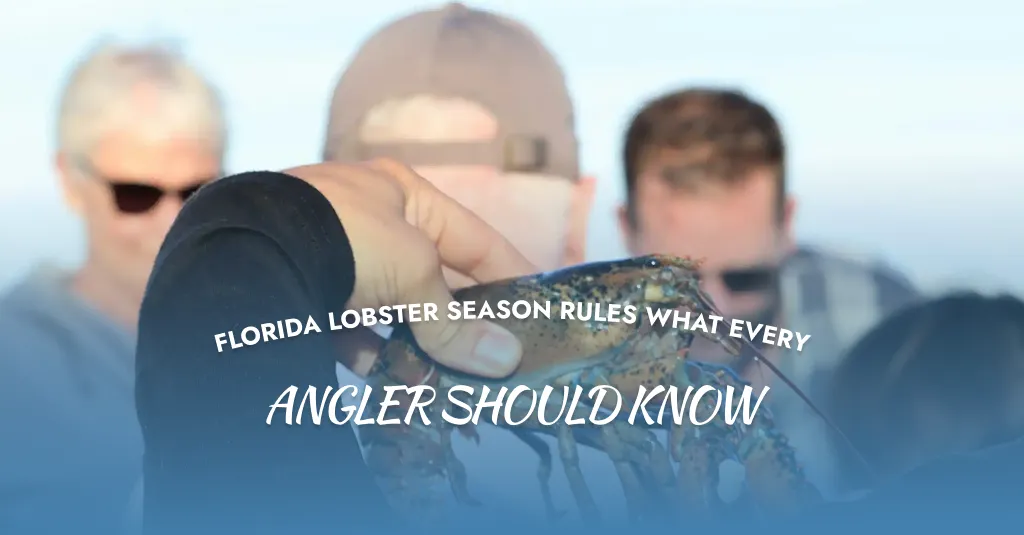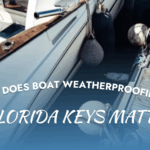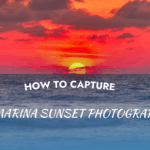
Florida Lobster Season Rules What Every Angler Should Know
If you’ve ever felt the rush of spotting a spiny lobster hiding under a coral ledge in the turquoise waters of the Florida Keys, you know why Florida lobster season is such a big deal. It’s that time of year when anglers, divers, and weekend warriors flock to the coast, nets in hand, chasing the thrill of the hunt.
But nothing kills the vibe faster than a hefty fine from the Florida Fish and Wildlife Conservation Commission (FWC) for breaking the rules. Understanding Florida lobster season rules isn’t just smart; it’s essential for keeping our marine ecosystems thriving. In this guide, we’ll cover everything from dates and licenses to bag limits and prohibited areas, with a nod to spots like Mangrove Marina in Tavernier, where you can launch your adventure hassle-free.
Florida lobster season revolves around the spiny lobster, a clawless critter that’s all about that tasty tail. The rules are designed to protect populations, especially during peak breeding times, so everyone can enjoy the bounty year after year. Whether you’re a first-timer or a seasoned pro, brushing up on these Florida lobster season rules will make your outing smoother and more successful.
Decoding the Dates: When Does Florida Lobster Season Kick Off?
Timing is everything in Florida lobster season, and the calendar is split into two main events to balance recreation and conservation. The mini lobster season, often called the sport season, is a quick two-day window that’s wildly popular, think crowded boats and excited divers everywhere. For 2025, mini lobster season in the Keys runs from July 30 to July 31, always the last consecutive Wednesday and Thursday in July. This gives recreational folks an early shot before commercial operations ramp up.
Then there’s the regular Florida lobster season, which stretches from August 6, 2025, to March 31, 2026; that’s nearly eight months of opportunity! During this period, both recreational and commercial harvesting are allowed, but expect stricter patrols in high-traffic areas like the Keys. If you’re planning around mini lobster season in the Keys, book your spot early; marinas fill up fast. At Mangrove Marina, their boat ramp is ideal for quick launches, and you can refuel at their fuel facilities before heading out to prime spots.
Keep in mind, these dates are set by the FWC, but always double-check for any last-minute changes due to weather or environmental concerns. Florida lobster season rules emphasize sustainability, so closures can happen to protect reefs or during storms.
Getting Licensed: Do You Need Permission to Hunt Lobsters?
Yes, you need a license for lobster hunting in Florida. Skipping this step is one of the most common mistakes that lands people in hot water. For anyone 16 and older, a valid Florida saltwater fishing license is required, plus a specific lobster permit (aka spiny lobster stamp). These are affordable; the permit is just $5 added to your fishing license, which costs around $17 for residents or $47 for non-residents annually.
Exemptions exist for kids under 16, seniors over 65 with proof of residency, and certain disabled individuals, but they still must follow all other Florida lobster season rules, like bag limits. You can snag these online via the FWC site, at bait shops, or even apps like GoOutdoorsFlorida. If you’re docking at Mangrove Marina, their on-site amenities make it easy to gear up – maybe grab a bite at the restaurant while you sort your paperwork.
Without a lobster permit, you’re looking at fines starting at $50 and up, plus potential gear confiscation. Florida lobster season rules are enforced rigorously, especially during mini lobster season in the Keys, when officers are out in force.
Size Matters: What Are the Legal Limits for Lobsters in Florida?
Florida lobster season rules are crystal clear on limits to prevent overharvesting. The bag limits vary by location: In Monroe County (home to the Keys) and Biscayne National Park, it’s six spiny lobsters per person per day. Elsewhere in Florida, you can take up to 12. During mini season, possession off the water doubles on the second day, but on-water limits stay the same to curb poaching.
Size is non-negotiable; the carapace (the hard shell from eyes to tail start) must exceed 3 inches, measured right in the water with a gauge you must carry. Undersized? Release it immediately. Egg-bearing females are off-limits year-round; look for orange eggs under the tail and let them go to ensure future stocks. These bag limits apply per person actively harvesting, not per boat, so don’t try to pool catches.
Violating these legal limits for lobsters in Florida can mean citations up to $500 or more, plus jail time in severe cases. Stick to the rules, and you’ll have plenty for a fresh grill session back at Mangrove Marina’s freshwater swimming pool area.
Gear and Methods: What’s Allowed (and What’s Not) Under Florida Lobster Season Rules
Florida lobster season rules ban anything that harms the lobster or its habitat. No spears, hooks, or devices that puncture the shell – that’s a big no-no. Instead, use a tickle stick to coax them out and a net to scoop. Bully netting (using lights at night) is okay during the regular season, but prohibited in some areas during mini.
Lobsters must be landed whole; no tailing at sea in state waters. Night diving is banned in Monroe County during mini lobster season in the Keys for safety. Always fly a dive flag, divers must stay within 300 feet (100 in channels), and boats must keep clear.
Prohibited areas include John Pennekamp State Park during sport season, Everglades and Dry Tortugas National Parks, and no-take zones in the Florida Keys National Marine Sanctuary. Check maps from FWC or apps like Fish Rules for boundaries. If your boat needs a tune-up before hitting these spots, Mangrove Marina’s working yard has mechanic racks ready.
Staying Safe and Sustainable: Tips to Enhance Your Florida Lobster Season Experience
Beyond the rules, smart practices make the Florida lobster season enjoyable. Gear up with gloves, a snorkel, and a mesh bag, and scout locations like reefs near Tavernier for hideouts. Go with a buddy, watch tides, and use reef-safe sunscreen to protect corals.
Sustainability is key; only take what you need, avoid damaging habitats, and report violations via FWC’s hotline. If you’re trailering, Mangrove Marina’s dry racks offer secure storage.
Boating safety is huge; wear life jackets, avoid alcohol, and know your limits in crowded waters during the mini season.
Final Thoughts: Dive In Responsibly This Florida Lobster Season
Mastering Florida lobster season rules means more than avoiding tickets – it’s about preserving the magic of the Keys for everyone. From the adrenaline of mini lobster season in the Keys to leisurely dives in the regular stretch, these guidelines keep the fun going sustainably. Armed with your license, gauge, and respect for the rules, you’re set for epic tales and tasty feasts.
Why not make Mangrove Marina your home base? With wet slips, houseboat lodging, and all the amenities for a perfect getaway, it’s the spot to launch your adventure. Head over to Mangrove Marina today, book your slip, and get ready to bag some bugs – legally, of course!
FAQs
When is mini lobster season in the Keys?
Mini lobster season in the Keys is July 30-31, 2025, the last Wednesday and Thursday of July.
Do you need a license for lobster hunting in Florida?
Yes, a saltwater fishing license and lobster permit are required for those 16 and older.
What are the legal limits for lobsters in Florida?
Bag limits are 6 per person per day in the Keys and Biscayne National Park, 12 elsewhere; carapace must exceed 3 inches.
Can I spear lobsters during Florida lobster season?
No, spearing or any piercing devices are prohibited; use tickle sticks and nets only.
What areas are off-limits for lobstering?
Prohibited zones include Everglades National Park, Dry Tortugas, and certain marine sanctuaries.
How do I measure a spiny lobster correctly?
Use a gauge in the water; the carapace must be over 3 inches from eyes to tail base.





